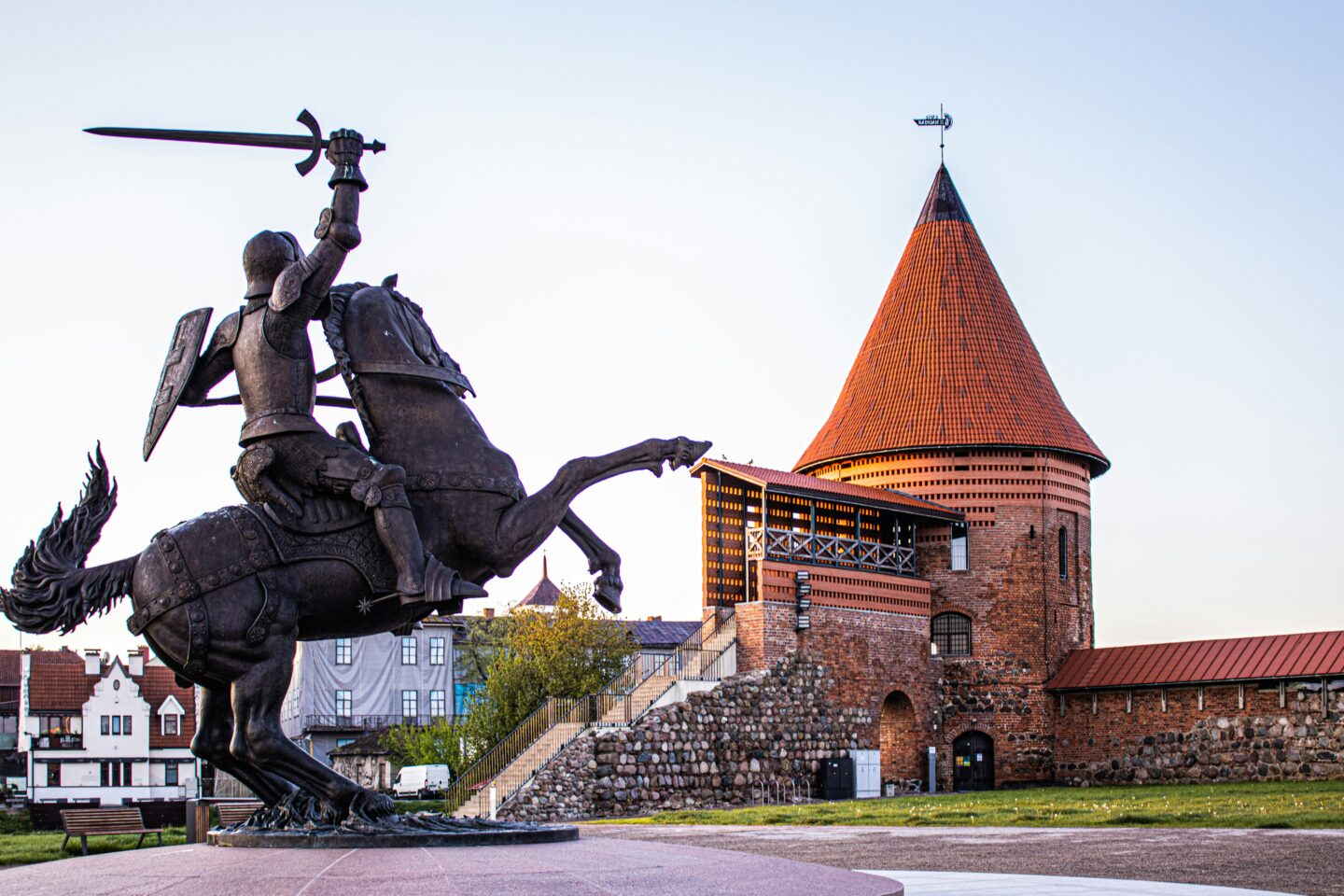We loved Kaunas. It may not be the capital of Lithuania, but it’s cool, buzzing and packed with history. It also has the best coffee shops we’ve ever experienced.
Just an hour by train from Vilnius, it makes a brilliant day trip or a perfect stand alone city. Here’s how we maximised out 24 hour stay.
Evening
We arrived in the early evening and took the 29G bus from the airport to the old town – it’s regular, quick and costs just one euro.
Kaunas has two rivers, two major hills and two historic funiculars. If you arrive before 6.30 pm, the best way to get your bearings is to cross the river and take the delightfully creaky, wooden 1935 Aleksotas Funicular for the best view of the old town.
Next we walked down through the trees, taking in the views and crossing back over the Nemunas River via the strategically important Vytautas the Great Bridge – which was blown up twice in World War 2 and rebuilt in 1945. Next we suggest wandering around the ancient cobbled streets and appreciating the atmosphere.
The main places to eat and drink are in the Town Hall Square and on Vilnius St. Being vegetarian we avoided the meat heavy local places and had a seriously good paneer curry at Masalaciti.
Morning
Time to revisit the Old Town. You will be spoilt for choice with breakfast coffee spots. If you’re near one, check out the Caffeine chain for great coffee, cakes and WiFi. Or try an independent cafe in the Old Town, we loved Lucci for fresh cinnamon buns and cappuccino.
The Old Town is relatively small, but massively beautiful. It’s a UNESCO World Heritage site and a perfect place to just wander. However, don’t miss the following: the Town Hall and Town Hall Square; the 14th century Kaunas Castle; and the exquisite 15th century Perkūnas House.
For lunch try Kauna’s pretty pedestrian street, Laisve Boulevard. Don’t miss the retro charm and delicious, cheap donuts from Spurgine – a soviet era bakery.
Afternoon
Kaunas is famous for interwar architecture (1918-40) and the new town is home to a dense display. You will spot the distinctive design everywhere, but our three favourites were: the Zaliakalnis Funicular built in 1931 and climbing 142 metres to a modernist station; the gleaming white, vast Christ’s Resurrection Church completed in 1940, serving as a Nazi storeroom and Soviet factory until independence – just minutes from the top of the funicular; and finally, near the bottom of the funicular, don’t miss the imposing Vytautas and the Great War Museum.
